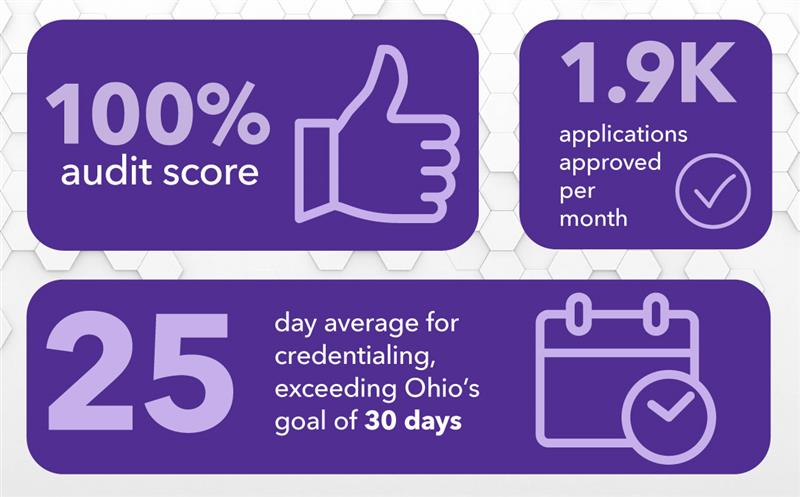A strong provider network is crucial for ensuring Medicaid members receive safe, high-quality care. Central to maintaining that quality is provider credentialing, which verifies that healthcare professionals are properly licensed and qualified to deliver care. When done effectively, credentialing builds trust, protects patient safety, and ensures compliance with regulations.
Yet in many states, credentialing is often a repetitive and time-consuming process, creating administrative burdens for providers and delaying members’ access to care. To address these challenges, the Ohio Department of Medicaid (ODM) took decisive action. ODM partnered with Maximus to launch a centralized credentialing program that streamlines the process, enhances the provider experience, and strengthens network quality — while maintaining the highest standards of care for Ohio residents.
Challenge
When people seek healthcare, they want assurance that their doctors, nurses, and specialists have the necessary qualifications to provide the care they need. To meet federal requirements to ensure safe, quality care, providers must verify their credentials with managed care organizations (MCOs) in the state.
In Ohio’s Medicaid program, providers must update their records regularly and re-credential every three years. This process was time-consuming and repetitive because providers must credential separately with each MCO. The slightest data discrepancies could delay contracts and affect data quality. Recognizing these issues, ODM sought a way to simplify and streamline credentialing statewide.
Solution
ODM partnered with Maximus, a leading provider of government services and an accredited Credentials Verification Organization (CVO) by the National Committee for Quality Assurance (NCQA). With decades of experience, we’ve helped state agencies modernize their Medicaid operations to improve service delivery to members.
With ODM, we developed a centralized credentialing program that allows providers to complete the process once through the state’s provider network module. Their verified information is securely stored for future updates and shared with all MCOs — eliminating redundant submissions, reducing administrative burden, and accelerating reimbursement of providers, hospitals, and facilities.
How we did it
We collaborated closely with ODM to design and implement a centralized credentialing solution that fully integrates with provider enrollment and screening processes. By collecting all required information upfront, providers can be enrolled, credentialed, and ready to contract with MCOs faster and with less hassle. This approach positioned ODM as the authoritative source for provider data, with daily updates that keep the information accurate and consistent across systems. As a result, Ohio was able to streamline its credentialing process and enhance the accuracy and integrity of its data.
After transitioning to centralized credentialing, the state reported the ability to “eliminate repetitive work, improve revenue cycles, and lower credentialing costs for hospitals, facilities, providers, and practices.”


